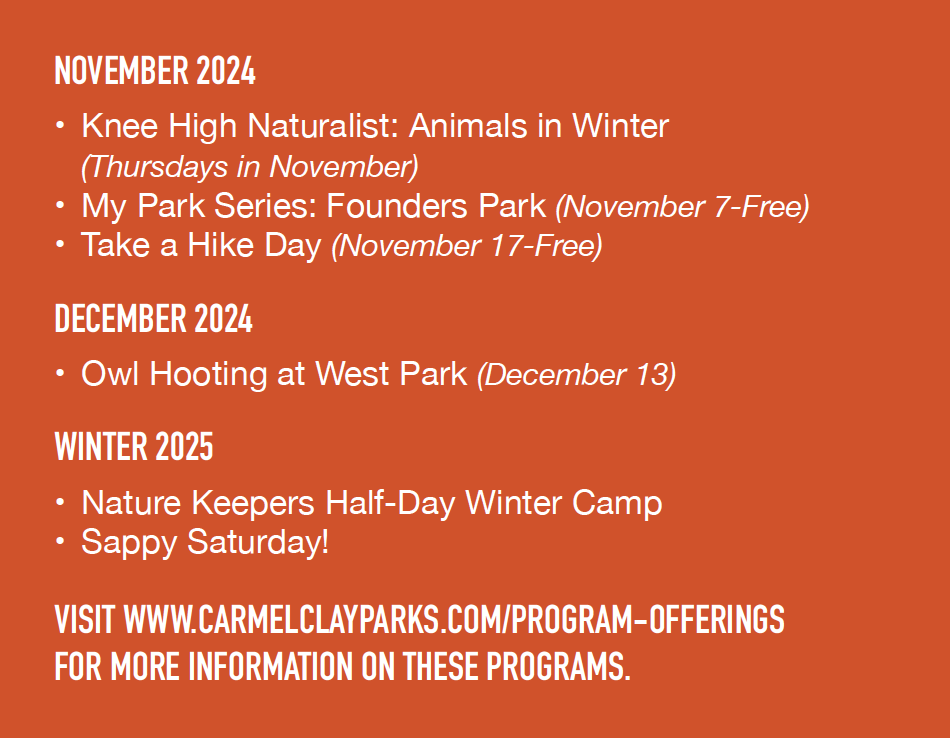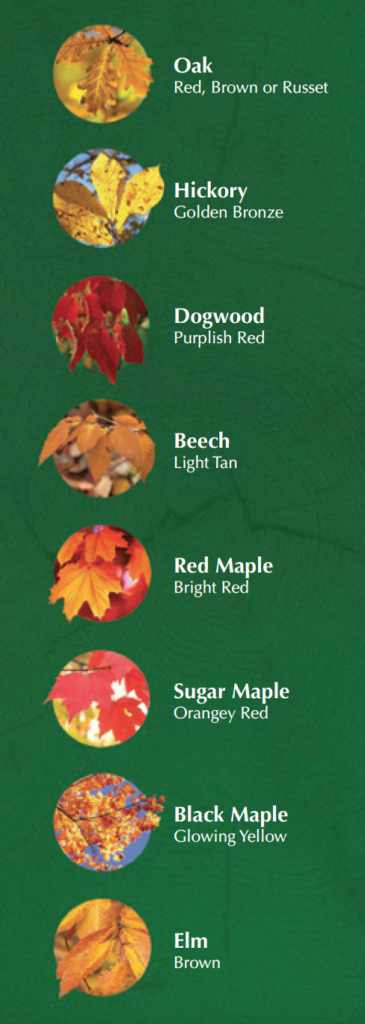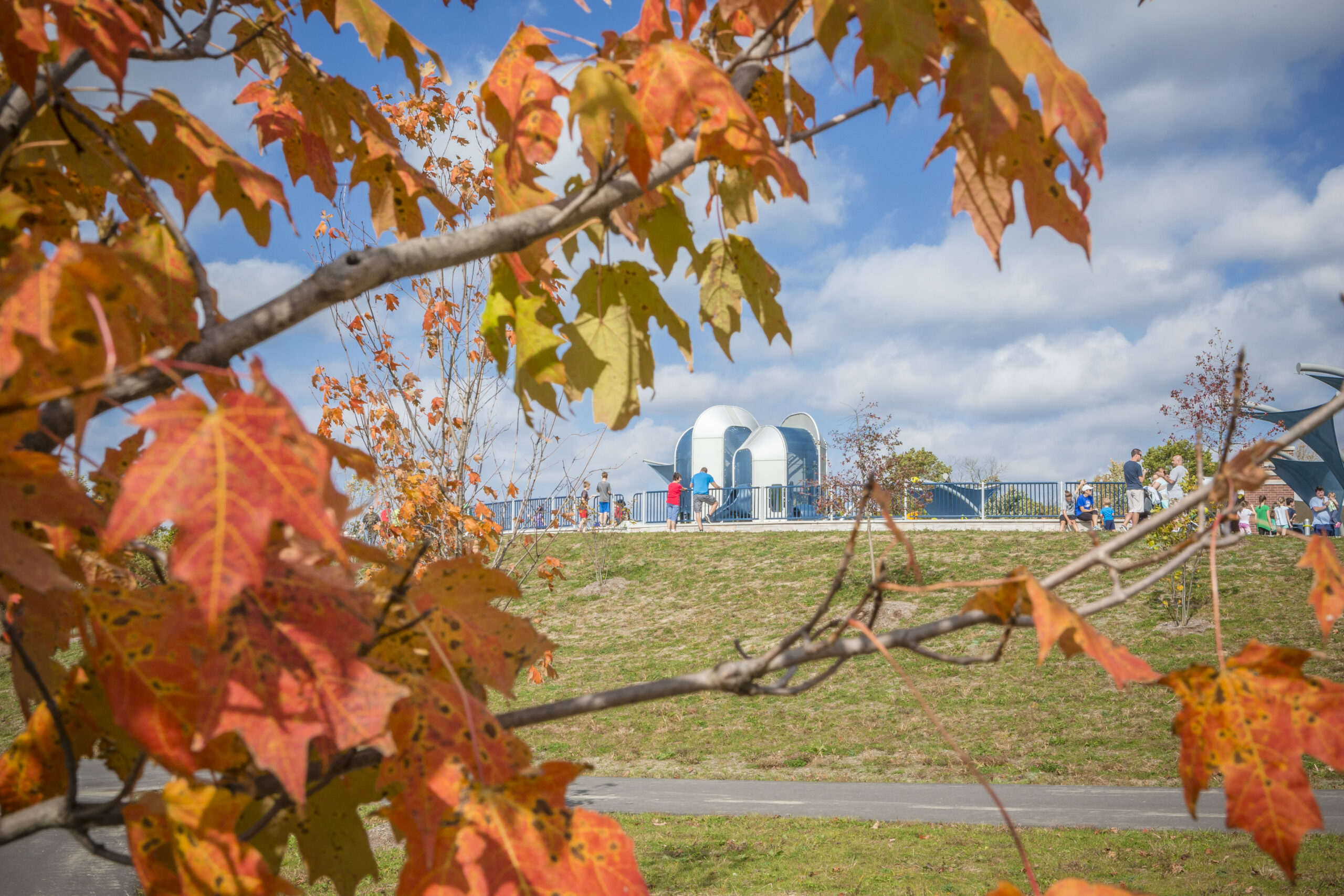Fall leaves and their vibrant colors play backdrop to incredible outdoor CCPR adventures
A walk, run or bike ride along one of Carmel Clay Parks & Recreation’s (CCPR) many trails in fall is a beautiful and nature-filled expedition. You might even hear remnants of the famous song “Autumn Leaves” remade in the 1980s by Nat King Cole as the soundtrack to your journey… the falling leaves drift by the window – those autumn leaves of red and gold.
“Autumn is the season of change and transformation,” shared CCPR’s resident naturalist Karen LaMere. “As fall approaches, three things begin to affect the changing color we often start to see: leaf pigment, length of night and the weather. These changes signify the end of one season and the beginning of another. What’s wonderful about the shift into fall is the array of colors that are added to the outdoor landscape.”
As the fall season progresses and the leaves produce less chlorophyll due to shorter sunlight days shares LaMere, the true colors begin to show. There are three types of pigment that are involved in autumn leaf colors:
- Carotenoids — which produce yellow, orange and brown
- Anthocyanin — gives leaves different shades of red
- Chlorophyll — provides the green color in leaves and is used in photosynthesis
“The weather plays a significant role in the changing color of the leaves,” LaMere said. “Warm, sunny days and cool crisp nights bring about the best show of color. Unfortunately, freezing nights will diminish the show of color causing the fall season to be less vibrant.”
In search of great fall-into-winter seasonal change viewing? Some of the best colors can be seen near the Monon Community Center, West Park, River Heritage Park and Flowing Well Park.
The leaves aren’t the only indicators that summer has turned to fall and soon to winter.
“All summer long and into early autumn animals have been eating — and eating to put on enough of a fat layer to survive the approaching long days of winter,” shared LaMere. “Groundhogs are particularly chubby before they begin their hibernation in mid-October.”
You may have noticed chipmunks and squirrels hurriedly gathering and burying acorns and nuts in early fall to stock up for the coming winter season. In addition, many bird species form large flocks before migrating to their wintering grounds in warmer places. Deer will fill up on nuts and berries and some of our insects will form a cocoon chrysalis for the winter and will emerge in the spring. Many insects die in the fall leaving only the adult female to find a good hibernating spot for the winter months.
“Our knee-high naturalist program that runs from September to December covers different topics related to the changing seasons,” LaMere offered. “There are fall programs for pre-school-aged children to adults to learn about fall and its preparations for winter.”
Whether it’s a nature program or you’re out and about by yourself or with family and friends— the colors of fall in Indiana rarely disappoint!


Written By: Sheryl Rodgers
Sheryl focuses on branding and marketing engagement. She’s a storyteller, editorial and media consultant, and brand builder. This story was written in partnership with Pickett & Associates.

